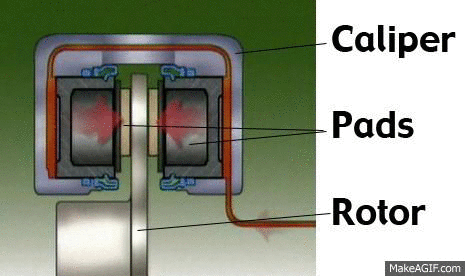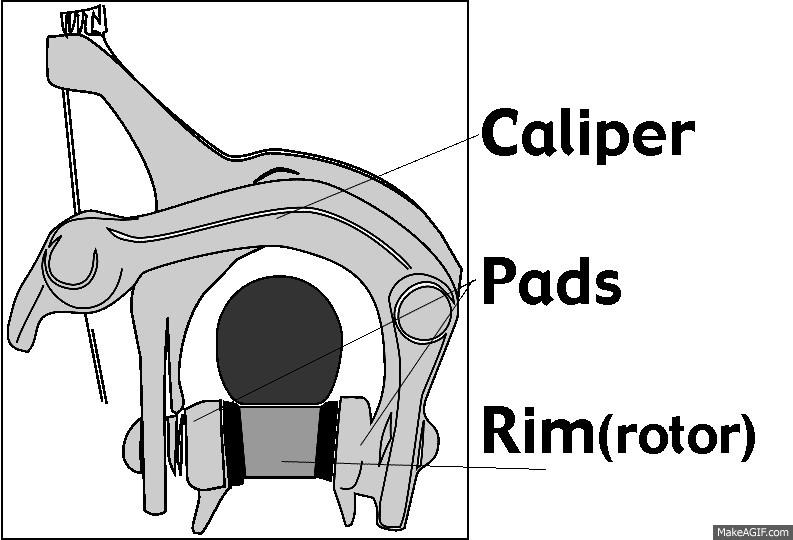In a disc-braking system the bike's wheels are attached to metal discs, or rotors, that spin along with the wheels. The job of the caliper is to slow the bike's wheels by creating friction with the rotors.
 The brake caliper fits over the rotor like a clamp. Inside each caliper is
a pair of metal plates bonded to friction material -- these are called brake pads. The outboard brake pads are on the outside of the rotors and the inboard brake pads on the inside. When you squeeze the brake lever, the pads squeeze against the rotor, creating friction. The brake pads have high-friction surfaces and serve to slow the rotor down or even bring it to a complete halt. When the rotor slows or stops, so does the wheel, because they're attached to one another.
The brake caliper fits over the rotor like a clamp. Inside each caliper is
a pair of metal plates bonded to friction material -- these are called brake pads. The outboard brake pads are on the outside of the rotors and the inboard brake pads on the inside. When you squeeze the brake lever, the pads squeeze against the rotor, creating friction. The brake pads have high-friction surfaces and serve to slow the rotor down or even bring it to a complete halt. When the rotor slows or stops, so does the wheel, because they're attached to one another.
A little credit where credit is due. This article is edited for bicycles, but I got most of the text from the 'how stuff works' website.
 A traditional bicycle brake is also a disc brake.
A traditional bicycle brake is also a disc brake.